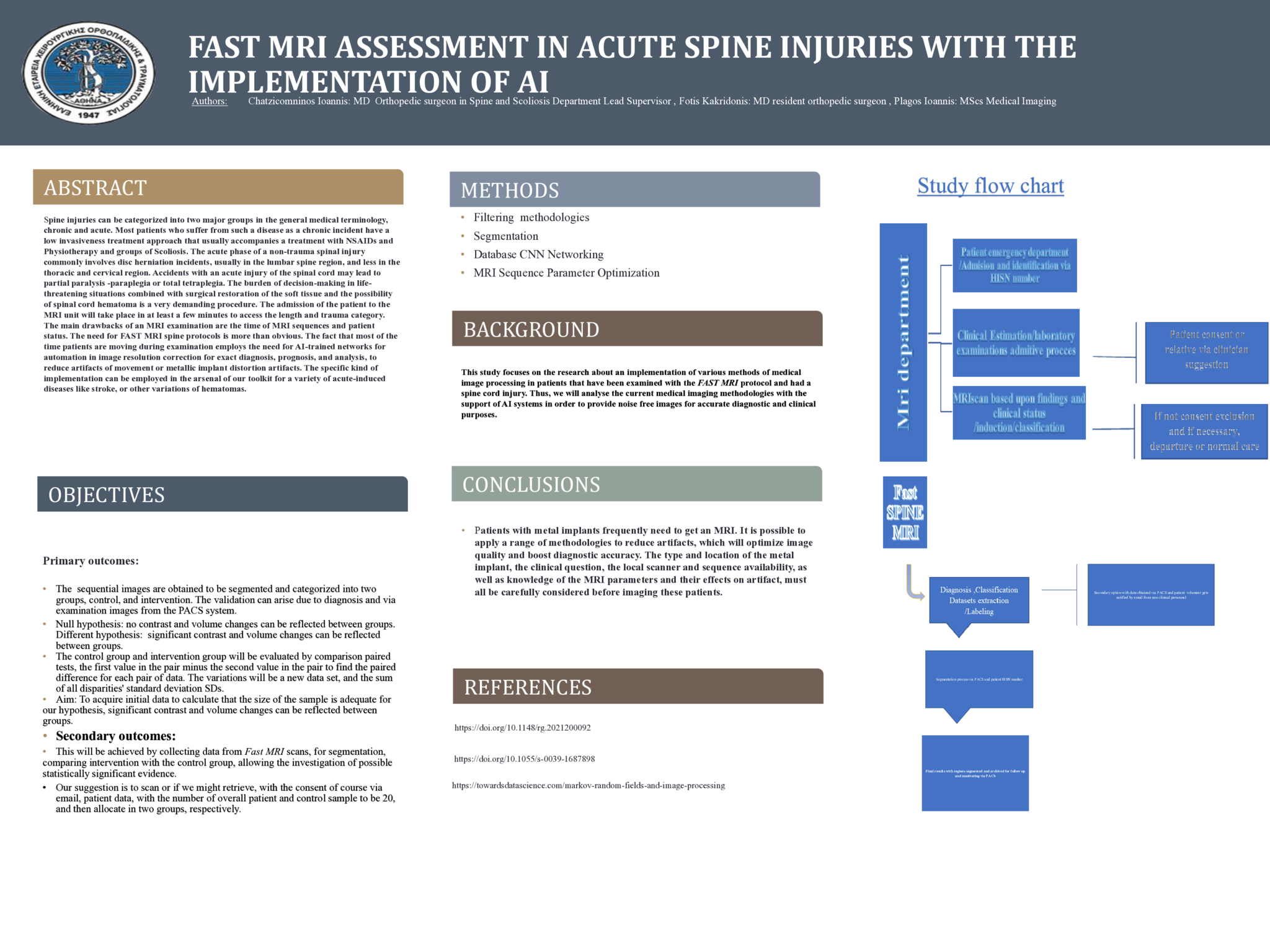Spine injuries can be categorized into two major groups in the general medical terminology, chronic and acute. The vast majority of patients who suffers from such a disease as a chronic incident have a mainly low invasiveness treatment approach that usually accompanies a treatment with NSAIDs and Physiotherapy and groups of Scoliosis. The acute phase of a non-trauma spinal injury commonly involves disc herniation incidents, usually in the lumbar spine region, and less in the thoracic and cervical region. Accidents with an acute injury of the spinal cord may lead to partial paralysis -paraplegia or total tetraplegia. The burden of decision-making in life-threatening situations combined with surgical restoration of the soft tissue and the possibility of spinal cord hematoma is a very demanding procedure. The admission of the patient to the MRI unit will take place in at least a few minutes to access the length and trauma category. The main drawbacks of an MRI examination are the time of MRI sequences and patient status. The need for FAST MRI spine protocols is more than obvious. The fact that most of the time patients are moving during examination employs the need for AI-trained networks for automation in image resolution correction for accurate diagnosis, prognosis, and analysis, to reduce artifacts of movement or metallic implant distortion artifacts. The specific kind of implementation can be employed in the arsenal of our toolkit for a variety of acute-induced diseases like stroke, or other variations of hematomas.
- 4 προβολές






